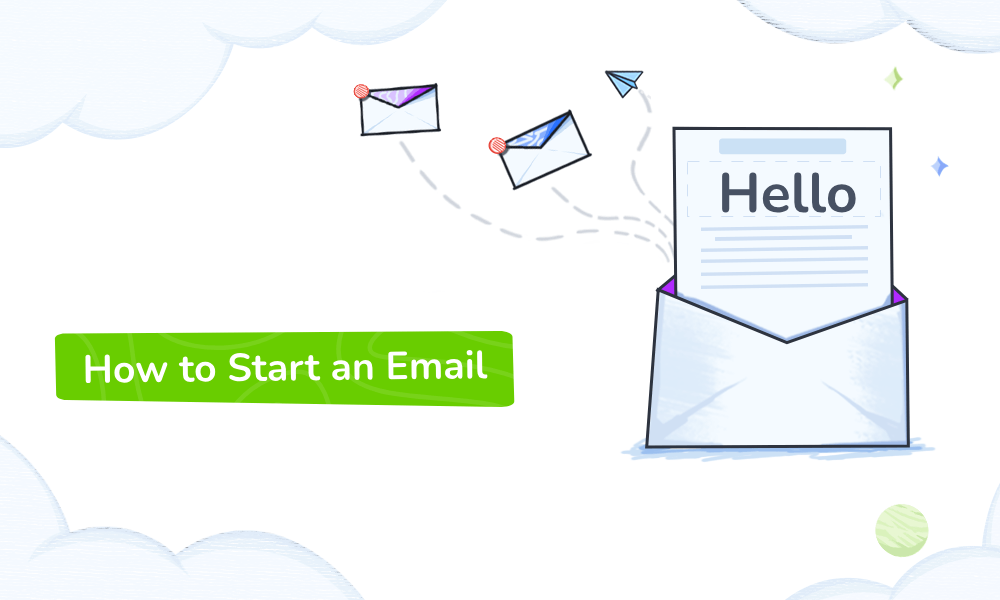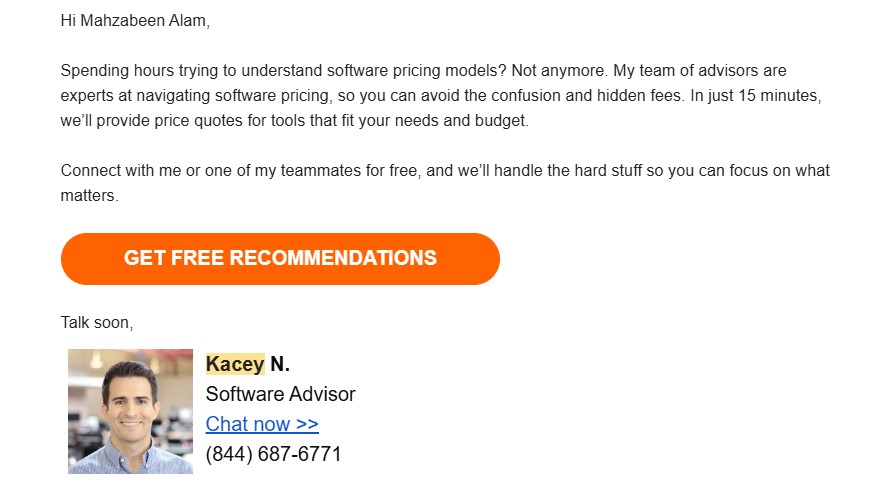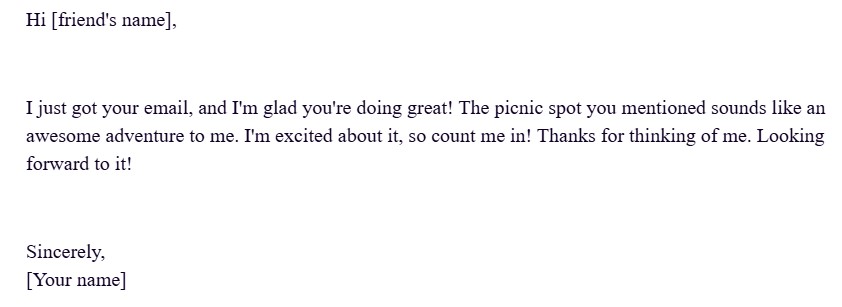Emailing might not bring you the expected result if you don’t know how to start an email appropriately. Email is a strong means of communication; otherwise, there wouldn’t be 4.37 billion email users around the world. And to nail this effective digital communication medium with your customers, clients, colleagues, or anyone else, you have to master the starting concepts of your email drafts.
Wondering how do you start writing a good email? Do you feel daunted about how to start off an email for formal, professional, business, etc., purposes? Not anymore!
This blog will help you through a thorough discussion, tips, and examples to prepare you to start your emails efficiently. You’ll get multiple ideas on formal, professional, business, and informal email starting.
Table of Contents
Things to Know about How to Start an Email
To start writing a good email message, you must start with email salutations and opening lines. These two are essential parts of an email body, making the entire email content engaging. How you start an email sets the tone for the recipient and is crucial for creating a positive first impression.
Email salutation
So, what is an email salutation? An email salutation is your “greeting” to the email receiver that appears right below the subject line. Salutation is an important component of email formatting since it sets the tone for your communication.
Email opening line
An email opening line comes after the email greetings or salutation. It’s essential to set the appropriate mood along with the first impression.
When picking an email salutation and opening line, consider mainly 3 things:
- Your email context/content/campaign
- Your relationship with the recipient
- The aim of your message
Multiple Approaches on How to Start an Email
Here are several approaches to starting emails in a variety of situations. Let’s get tips and examples on how to start an email for different purposes.
How to Start a Formal Email
What is a formal email?
A formal email is a well-organized message with a professional tone, polite/courteous, and adheres to specific rules. It is generally employed to communicate with individuals with whom you are unfamiliar or with individuals in positions of authority, such as a potential employer, new customer, or higher-up at your organization.
Now, let’s collect some tips and examples on how to start off an email for formal purposes.
Formal email starting tips
- Make sure your email subject line is precise and concise.
💡Relevant read: Learn about welcome email subject lines
- Start your email with a professional greeting or salutation followed by an opening line. Later on, you’ll have a bunch of examples regarding this.
- Introduce yourself if necessary.
- Avoid overly casual language.
Make sure that your email address appears authentic and professional.
Formal email salutation examples
The following are appropriate formal email salutations/greetings:
- Dear [name],
- To Mr/Miss/Mrs/Ms [name],
- Hello [name],
- Hello, Mr/Miss/Mrs/Ms [name],
Use “Hello” instead of “Hi” in formal writing as it sounds more formal.
You can use their name rather than Mr., Ms., or Mrs to be more inclusive:
- To [name],
- Dear [name],
- Hello [name],
- Dear Mr./Ms./Dr./Professor/(suitable designation) [last name],
Professional designations show knowledge and respect. For example, “Dear Dr. Roberts” can be a formal email salutation when addressing a doctor. This is a helpful tactic if you are unsure of the recipient’s first name.
What if you are unsure of the recipient’s name or even the recipient itself? The following should help you:
- To whom it may concern,
And if you have multiple recipients, then go with:
- Hello everyone/team/(sector/group name),
Or just go with simple:
- Greetings,
- Greetings [full/last name]
Formal email opening lines
How do you start the first line of an email for formal purposes? Here are some useful formal email starting lines or opening lines examples:
- I hope this email finds you in good health.
- I hope this email finds you well.
- I hope you’re doing well.
Or, combine the previous two:
- I hope you are doing well and that this email finds you well.
- I appreciate the update.
- I appreciate the prompt follow-up.
- Thank you for the update, [name].
- I appreciate you providing the update.
- I appreciate the valuable information.
- I appreciate your updated information.
- Please accept my gratitude for the information.
- I want to get in touch about [Subject].
- I would like to communicate with you regarding [Subject].
- [Name] Good morning/afternoon/evening.
- I am [Name]. Good morning/afternoon/evening.
Formal email example
Here’s a formal email example for you! Check out this email’s starting.
- The email salutation is “Hello, Mr. Gilbert.” It went with a simple “Hello” followed by the honorific “Mr” and the last name of the email recipient, “Gilbert.”
- The email opening line is concise and to the point. The recipient will get the main gist just by reading the starting line of the email message.
- How to introduce yourself in an email? See in this formal email template, right after the opening line, the sender provided a self-introduction in the email, claiming to be “a full-time active student at the University of Toronto … ” You can also introduce yourself this way at the start of your email.
How to Start a Business Email
What is a business email?
A business email is a newsletter that a company/brand sends to its subscribers/customers to share news and updates. Business emails entail professional communication that mostly requires a semi-formal tone to engage with clients, partners, and vendors. They shape a company’s identity and reputation while providing more protection than personal email addresses.
Now, let’s collect some tips and examples on how to start an email for business purposes.
Business email starting tips
For starting a business email, consider:
- Write a catchy, concise, and engaging subject line using the main keyphrase of your business email content.
- After creating a catchy and engaging subject line for the main message, start the email by addressing the recipient. Use a suitable salutation to address your client/subscriber.
- Use an engaging opening line/introduction line. Make sure it goes with your email content vibe.
- Ensure you convey your email campaign’s main ideas/info through the heading and brief messages at the start of the email.
Always try to craft personalized emails to remain relevant to your subscribers/clients.
Business email salutation examples
Below, find some of the best business email salutations:
- Dear [name]
- Dear Mr/Ms [name]
It will be a semi-formal salutation to approach someone in a position of respect. For instance, “Dear Mr. Robinson” or just the client’s name, like “Dear Catharina Maura.”
The same can be done using “Hello/Hi”:
- Hello/Hi [name],
- Hello/Hi Mr/Ms [name]
It can be an appropriate salutation for semi-formal communications. For example, “Hello/Hi Sally Robertson.” As business emails can be written in a semi-formal tone, so here you can use “Hi” as your salutation. However, it suits the friendly tone more, so prioritize using “Hello” over “Hi” if you don’t want to give a friendly touch. But, if your email context gives a friendly vibe, go with a friendly tone and use “Hi” as your business email salutation.
How to start an email with a safe and polite salutation? Unsure of the recipient’s name or gender or confused about what to pick as your business email salutation? Without any hesitation, just choose:
- Greetings,
- Dear reader,
- Dear client,
- Dear Sir/Ma’am/Madam,
It’s a safe and neutral email salutation that sounds polite and respectful at the same time, which you can use in situations like that.
Want a few more neutral greeting examples that can be used when you’re unsure of the recipient’s name but know the gender? See the following:
- Dear Sir/Ma’am/Madam,
- Hello/Hi Sir/Ma’am/Madam,
You can choose your business email salutation based on the time of your email campaign’s sending.
- Good Morning/Afternoon/Evening [full/last name],
Email sending time-based salutations can be a bit professional yet relaxed tone for your email.
Business email opening lines
Here are some useful business email opening lines examples:
- I hope you’re well.
- I hope you’re well, safe, and sound!
- I hope this email finds you well.
- Let me introduce myself.
- Let’s get introduced first!
- I hope you are having a great/wonderful week.
- I hope your day has been well/great.
- I am contacting you in regard …
- I would love/like to know/inform/talk about …
- I would like/love to get in touch with …
- I’m glad to hear from you!
- I’m following up on my previous email on…
- I wanted to provide you with an update on …
- Thank you for getting in touch with our brand
- It is good to have a conversation with …
- I’m glad to inform you …
Business email example
Let’s have an example for starting a business email.
- This business email is from Capterra, and the email message starts with the salutation of “Hi Mahzabeen Alam,”. It went with a friendly vibe, “Hi” followed simply by the full name of the email recipient, “Mahzabeen Alam”.
- The email opening lines start with the question, “Spending hours trying to understand software pricing models? … ” which is very engaging and to the point, followed by reassuring lines that their team of advisors will help with it. The recipient will get hooked by the question and know it’s regarding software pricing models.
How to Start a Professional Email
What is a professional email?
What is a work email, and how to start an email professionally? A work or professional email is used for work purposes that involve a professional context. For example, if two coworkers want to discuss anything work-related through email, then it would be a professional email. It requires a formal tone and a bit of a friendly yet mostly professional manner.
So, how to begin an email professionally? Let’s learn some tips and examples on how to start an email professionally.
Professional email starting tips
- Write the email subject line in a professional manner. Make it exactly to the point.
- Be precise and straightforward. Only add relevant information, get to the exact point, and avoid beating around the bush.
- Before worrying about how to start an email, you need to think about your target audience. After that, adapt your email to the tastes and requirements of the recipient. For instance, if you’re writing to HR for a leave application, then write in a suitable, professional manner, just like your conversation with HR should be.
- Try to keep your email message brief and direct because the typical office worker receives a lot of emails every day, so don’t bombard them with unimportant talks.
- Pose a meaningful query or something thoughtful question. Relevant queries have a higher chance of encouraging the recipient to continue engaging.
Professional email salutation examples
Here, get some professional email salutation examples:
- Dear [name]
If you’re confused about the recipient’s gender, then just going with the name is wise. Go with the full name. Or, go either by first or last name.
- Dear [Title/designation] [Last Name]
Use this salutation to address someone with a specific title/designation or when you have to show high respect. For example, “Dear Professor Yagisawa,” -addressing a professor in an academic working space.
- Dear all,
- Greetings, [Department/Team/Group Name],
- Hello, [Department/Team/Group Name],
- Hello everyone,
- Greetings everyone,
Use this salutation when addressing a Department/team or group. Also, remember, it’s better to use “Hello” instead of “Hi” as professional writing prefers a formal tone.
And as always, if you are unsure or unaware of the receiver’s name/gender/designation or don’t want to specify the addressee, then go with:
- Greetings,
- To whom it may concern
Professional email opening lines
What is a good opening sentence for an email for professional use? Here are some useful professional email opening lines examples:
- I’m reaching out to discuss …
- I hope this email finds you well.
- Thank you for your time and attention.
- Thank you for reaching out to us.
- I am writing to inquire about …
- Thank you for the quick response.
- I’m contacting you about …
- Could you clarify your statement on …?
- I would love to hear about your recent experience on …
- I appreciate your expertise on …
- I would like to seek your input on …
- I would appreciate it if you could tell me …
- Let’s get introduced to …
- It’s so good to hear from you.
- I am here to discuss about …
- I am pleased to introduce you to our new (name/post name)
- Thank you for the prompt/fast response.
- I’m glad to inform/notify you regarding …
- I would love to hear about your thoughts on …
Professional email example
Let’s have an example for starting a professional email.
- The email salutation in this professional email is “Dear all.” It went with a professional tone, addressing the team or every employee.
- The email opening line starts with, “Let’s get introduced to …” aiming at getting introduced to the new employee. The recipient will quickly know it’s an introductory email by going through the starting line.
How to Start an Informal Email
What is an informal email?
An informal email is a lighthearted, casual, conversational communication between friends, relatives, or coworkers (not related to work stuff).
Now, let’s collect some tips and examples on how to start an email for informal purposes.
Informal email starting tips
- Write the email subject line in a casual way. Use emojis to give a jolly vibe.
- Start your email body with a friendly, casual email salutation or greeting so your recipient doesn’t feel detached.
- Informal email should be casual. So, start your writing informally and avoid a formal tone.
- You can use emoticons to express your feelings/emotions. It will help you portray your genuine expression more vividly.
- In terms of informal email, you don’t really have to keep the email content entirely to the point. You can write more than the core reason for writing but don’t make it too long. It’s better to keep the email message within medium length.
- Use humor in your email message because playful communication helps increase engagement. Plus, it strengthens the relationship with your recipient.
Informal email salutation examples
Here are some examples of informal email salutations:
- Hello [First Name]
- Hey [First Name]
- Hi there, [First Name]!
Or, go more casual:
- Hey
- What’s up!
- Hi/Hey buddy,
- Yo!
- Hey there!
- Alright!
- Hi, y’all!
For multiple audiences, use:
- Hi everyone,
- Hello/Hi/Hi team,
- Hey/Hi folks!
Informal email opening lines
Here are some useful informal email opening lines examples:
- How’s it going?
- Hello from the other side,
- Here to pop into your inbox and say hi.
- Just wanted to pop into your inbox and say hi.
- Long time no talk, let’s catch up!
- Want to know/guess who’s thinking of you?
- I was thinking of writing you soon but …
- What’s up, friend/buttercup? Just dropping by to see how you’re doing.
- Thanks for getting back.
- Hey, just wanted to say thanks for the help!
- I’m here to contact you about …
- How are you surviving the middle of the week?
- How’s the mid-week going for you?
- I’d love/want/appreciate to get your advice on …
- Wanna hang out this weekend?
- Nice hearing from you!
- Could you help me with something?
- I’ve got some news to share!
Informal email example
Let’s have an example for starting an informal email.
- The email salutation in this informal email template is “Hi [friends name].” It went with a casual tone, addressing the recipient, who is a friend by the name.
- The opening line of the email starts with, “I just got your email, and I’m glad you’re doing great!” This means that it’s a follow-up email that starts with warm gestures. The recipient will get a friendly, warm vibe from the start of the email.
Wrap Up
Email is a crucial communication medium to date and is still used in both formal and informal ways. It’s normal not to know how to start an email and have a hard time dealing with it. But you have to push yourself to learn about it so your recipients get hooked from the beginning and engage until the end of the email. You need to learn and practice effective tips to master email starting skills. The good thing is that you have this blog at your hand for assistance. Follow the given email starting ideas and ace your email marketing communication using our effective email marketing tool, MailBluster.







 Contents
Contents
